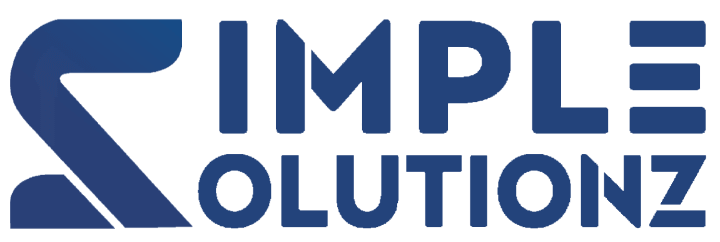If you think search engine optimization merely involves satisfying Google through keyword optimization, reconsider your perspective. The landscape of 2024 is indicating a shift towards prioritizing relationship-building.
Although artificial intelligence and machine learning are gaining prominence, handling various tasks and even assisting in decision-making, the core remains to forge connections with actual individuals – your target audience.
Adapting to SEO algorithm changes and comprehending your audience’s desires and online behavior is crucial.
As we approach the end of 2023, site owners should now focus on outlining their comprehensive SEO checklist for the upcoming year, 2024.
Contents
- Why Do You Need SEO Practices to Increase Online Visibility?
- The SEO Checklist for 2024
- SEO Basics Checklist
- Google Analytics and Search Console
- Technical SEO Checklist
- On-Page SEO Checklist
- Keyword Research Checklist
- Off-Page SEO Checklist
- Local SEO Checklist
- Mobile SEO Checklist
Why Do You Need SEO Practices to Increase Online Visibility?
Implementing SEO practices is essential for increasing online visibility for several reasons:
Search Engine Rankings
The main purpose of SEO is to boost a website’s ranking in search engine results pages. Websites with higher rankings are more prone to garner clicks and attract traffic. Given that most online journeys commence with a search engine, it becomes imperative to have visibility in pertinent searches.
Increased Website Traffic
Elevated rankings result in enhanced visibility, subsequently driving a major growth in organic traffic to your website. SEO facilitates reaching a broader audience, bringing your content, products, or services to the attention of potential customers actively seeking information within your industry.
Credibility and Trust
Users recognize websites visible at the head of the search results as more credible and trustworthy. Revolutionizing local and global SEO campaigns helps build trust with your audience. Users are likelier to click on results from reputable sources, and a higher search ranking contributes to this perception.
Better User Experience
SEO goes beyond pleasing search engines; it enhances the overall user experience. Search engines identify and reward websites that provide a positive user experience by granting them higher rankings. Through the optimization of your site’s structure, content, and performance, you establish a user-friendly environment that captivates and engages visitors.
Targeted Traffic
SEO permits you to focus on specific keywords and phrases pertinent to your business. This focused strategy ensures that the traffic you draw is more inclined to be interested in your products or services. By optimizing for the appropriate keywords, you can connect with your ideal audience and enhance the probability of turning visitors into customers.
Competitive Advantage
A strong SEO strategy provides a significant advantage in a competitive online landscape. If your competitors invest in SEO and you do not, they will capture a larger online market share. Conversely, if you are ahead in SEO, you can outperform competitors and establish your brand as an industry leader.
Adaptation to Algorithm Changes
Search engines update their algorithms to improve the quality of search results. Staying current with SEO practices ensures that your website adapts to these changes. Failure to keep up with algorithm updates can result in a drop in rankings, affecting your online visibility.
Global Reach
For businesses aiming for a global audience, SEO is crucial for reaching users worldwide. Through international SEO practices, you can optimize your website to appear in search results according to different regions and languages, expanding your reach to a diverse audience.
Analytics and Insights
Utilizing SEO tools and analytics delivers valuable insights into user behavior, preferences, and the efficacy of your online strategies. Through careful data analysis, you can fine-tune your approach, pinpoint areas for enhancement, and make well-informed decisions to boost your online visibility further.
The SEO Checklist for 2024
- SEO Basic Checklist
- Technical SEO checklist
- On-page SEO Checklist
- Keyword research checklist
- Off-page SEO Checklist
- Local SEO Checklist
- Mobile SEO Checklist

The optimal approach is to tackle each item on the list systematically. During your initial run-through, avoid making immediate fixes; instead, navigate through the entire checklist and establish your personalized SEO checklist.
Remember, in SEO, the cumulative impact of numerous minor adjustments can significantly influence your Google rankings.
SEO Basics Checklist
SEO is a multifaceted discipline; the benefits of local SEO for a small business and a solid foundation are crucial for success. The SEO Basics Checklist ensures that you cover fundamental aspects essential for a well-optimized website:
Website Structure
- Have a clear and logical site structure with easily navigable menus.
- Utilize descriptive and SEO-friendly URLs.
- Implement an XML sitemap for search engines to crawl and index your pages efficiently.
Meta Tags
- Craft captivating meta titles and descriptions for each page.
- Use unique meta tags for every page, incorporating relevant keywords.
Robots.txt and Crawling
- Create a robots.txt file to guide search engine crawlers on which pages to crawl or ignore.
- Regularly check for crawl errors in Google Search Console.
- Google Analytics and Search Console
Google Analytics and Search Console
Google Analytics and Google Search Console stand out as robust tools provided by Google, supplying invaluable insights into your website’s performance and visibility. Each tool serves a unique purpose, and when used together, they offer a holistic view of your online presence.
Google Analytics
1. Purpose:
Google Analytics monitors and analyzes user interactions on your website, furnishing detailed information about how visitors interact with your content. This includes insights into metrics such as page views, session duration, bounce rates, and more.
2. Key Features:
- Traffic Sources: Analyze where your website traffic belongs, whether through organic search, paid advertising, social media, or referrals.
- User Behavior: Understand how users drive your site, which pages they visit, and how much time they spend on each page.
- Conversion Tracking: Set goals and track conversions for completing a purchase, filling out a form, or other desired actions.
3. User Insights:
- Gain insights into your audience, such as demographics, interests, and geographic locations, helping you tailor your content and marketing strategies.
4. Integration:
- It easily integrates with other Google products and third-party tools, allowing you to consolidate data and streamline your analytics.
5. Performance Monitoring:
- Continuously monitor real-time website performance, identify emerging trends, and make data-based decisions to enhance user experience.
Google Search Console
1. Purpose:
- Google Search Console is created to help website owners monitor and optimize their site’s presence in Google search results.
2. Key Features:
- Search Performance: View your site’s performance in Google Search, including clicks, impressions, click-through rates (CTRs), and average position.
- Index Coverage: Identify and fix issues related to how Googlebot crawls and indexes your site.
- URL Inspection: Get detailed information about how a specific URL appears in search results and whether it’s eligible for indexing.
3. Search Queries:
- Understand the queries for which your site appears in search results and the user behavior associated with those queries.
4. Crawling and Indexing:
- Detect and resolve issues related to crawling errors, sitemap submissions, and index status to ensure optimal visibility in search results.
5. Mobile Usability:
- Evaluate your site’s performance on mobile devices and address any usability issues that impact mobile search rankings.
6. Security Monitoring:
- Receive alerts and notifications about potential security issues, such as malware or phishing attempts, affecting your site’s search appearance.
7. Rich Results:
- Understand how your pages may appear as rich results in search and optimize structured data to enhance your search presence.
8. Insights for Webmasters:
- Receive alerts and notifications about critical issues impacting your site’s visibility, ensuring timely responses to maintain a healthy online presence.
Integration with Google Analytics:
- Seamlessly integrates with Google Analytics, allowing you to combine insights from both platforms for a comprehensive understanding of your website’s performance.
Technical SEO Checklist
Technical SEO focuses on the backend elements that impact search engine crawling and indexing. Addressing technical aspects is crucial for a well-optimized website:

Website Speed
- Optimize images and use efficient coding to improve page load times.
- Consider a Content Delivery Network (CDN) for quick content delivery.
Mobile Friendliness
- Ensure your website is responsive and mobile-friendly.
- Validate mobile-friendliness with Google’s Mobile-Friendly Test.
SSL Certificate (HTTPS)
- Fix your website with an SSL certificate to boost security and gain SEO benefits.
- Google tends to favor secure websites (HTTPS) in its search rankings.
Schema Markup
- Integrate schema markup to give search engines more information about your content.
- Schema markup can enhance rich snippets in search results.
On-Page SEO Checklist
On-page SEO involves optimizing individual pages for search engines. This checklist ensures that your content is not only valuable but also optimized for search:
High-Quality Content
- Create extraordinary, valuable, and relevant content for your target audience.
- Use proper formatting, including headings, to enhance readability.
Keyword Optimization
- Conduct keyword research and strategically place keywords in title tags, headers, and content.
- Avoid keyword stuffing; maintain a natural and reader-friendly flow.
Internal Linking
- Integrate relevant internal links to other pages on your website.
- Internal linking aids in distributing page authority and improving navigation.
Optimized Images
- Utilize clear and descriptive file names for your images and incorporate alternative text
- Compress images without compromising quality to improve page loading times.
Keyword Research Checklist
Keyword research is the foundation of SEO. A strategic approach to keywords ensures that your content aligns with user intent:
Identify Target Keywords
- Use tools like Google Keyword Planner, SEMrush, or Ahrefs to recognize relevant keywords.
- Consider long-tail keywords to capture specific search queries.
Competitor Analysis
- Analyze competitors’ keyword strategies to discover opportunities.
- Focus on both short-tail and long-tail keywords.
Searcher Intent
- Understand the intent behind search queries (informational, transactional, navigational).
- Create content that aligns with the searcher’s intent.
Off-Page SEO Checklist
Off-page SEO involves activities outside your website that impact search rankings. Building a strong off-page SEO strategy is essential for online authority:

Link Building
- Secure high-quality backlinks from reputable websites.
- Link-building efforts, such as guest posting, influencer outreach, and social media promotion, can significantly contribute to this endeavor.
Social Signals
- Sustain an engaged presence on social media platforms.
- Promote the sharing of your content to enhance overall visibility.
Online Reputation Management
- Monitor and manage online reviews and mentions.
- Respond to customer feedback and address issues.
Local SEO Checklist
For businesses with an online presence, optimizing for local search is imperative. The Local SEO checklist ensures your business is visible in local searches:
Google My Business
- Optimize your Google My Business (GMB) profile with accurate business information.
- Encourage customer reviews on your GMB listing.
Local Citations
- Ensure consistent NAP (Name, Address, Phone) information across online directories.
- Claim and optimize listings on relevant local directories.
Local Content
- Create locally relevant content and include location-based keywords.
- Highlight local events, partnerships, and community involvement.
Mobile SEO Checklist
With the increasing prevalence of mobile users, optimizing for mobile is paramount. The Mobile SEO Checklist ensures your website is mobile-friendly and provides an optimal user experience:
Responsive Design
- Implement a responsive design that modifies to various screen sizes.
- Test your website’s mobile friendliness regularly.
Mobile Page Speed
- Optimize images and code to enhance mobile page loading times.
- Utilize Google’s Mobile-Friendly Test and Page Speed Insights.
Mobile UX
- Ensure buttons and links are easily clickable on mobile devices.
- Simplify navigation for a seamless user experience.
The significance of a meticulous and strategic approach cannot be overstated. This comprehensive SEO checklist is a detailed guide to empower businesses and individuals alike in optimizing their websites for search engine success. By diligently following these checklists, you’ll establish a strong SEO foundation and position your website for sustained success in 2024 and beyond.

